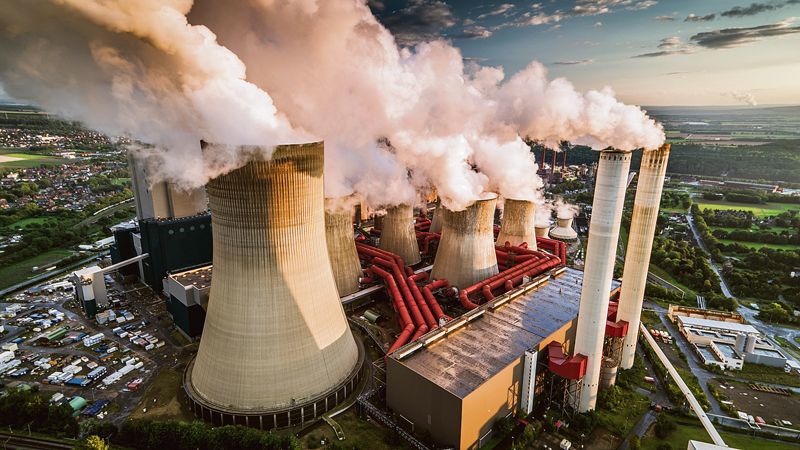Time running out to combat climate change
ON June 17, the World Day to Combat Desertification and Drought, United Nations Secretary-General (UNSG) Antonio Guterres told the 193 member states that almost 40 per cent of the planet’s land was degraded. “The security, prosperity and health of billions of people rely on thriving lands supporting lives, livelihoods and ecosystems, but we are vandalising the Earth that sustains us,” he said. In his World Environment Day (June 5) address, Guterres had expressed concern about humankind’s profound insensitivity: “Our planet is trying to tell us something. But we don’t seem to be listening.”
His words were echoed in the June 20 speech by Carlos Manuel Rodríguez, Chairperson of the Global Environment Facility, at its council meeting held in Washington DC: “We are at a moment of truth for the planet. We need to rise to the challenge by assessing what we have, where we need to go and how we will get there.”
June witnessed two major global discussions — the Bonn climate talks and the G7 parleys in Apulia, Italy. Later in the year, the G20 Summit (in Rio de Janeiro on November 18-19), the 79th session of the UN General Assembly (on September 10) and the COP29 (in Baku from November 11 to 22) will be held.
A study has found that even if greenhouse gas (GHG) emissions hit zero tomorrow, the climate chaos will cost at least $38 trillion a year by 2050. This staggering cost underscores the gravity and implications of climate change.
The warning bells concerning the planetary crisis and the quest of conscientious thought leaders and decision-makers to find solutions sum up the proverbial dilemma of humankind while living in harmony with nature. Works such as Silent Spring (1962) and The Limits to Growth, This Endangered Planet and Only One Earth (all three published in 1972) had set the stage for the epochal UN Conference on Human Environment in Stockholm in 1972. They highlighted that the “human quest for development seriously threatens our fragile ecosystem”. In recent years, works like Envisioning Our Environmental Future and Our Earth Matters have reflected the spirit of those early benchmarks by reminding the decision-makers of the rapidly ‘depleting time’ for a decisive course correction for planetary existence.
The UNSG’s warning is based on the findings of several scientific reports. According to the World Meteorological Organisation’s (WMO) Global Annual to Decadal Climate Update (2024-28), “there is an 80 per cent likelihood that the annual average global temperature will temporarily exceed 1.5°C above pre-industrial levels for at least one of the next five years.” The WMO’s February 2023 report also stated that during the period from 2013 to 2022, the sea level rise was 4.5 mm/year, wherein human influence was construed as the main driver of such an alarming surge.
The IPCC Sixth Assessment Report (April 2022) drew the grim scenario that the “net anthropogenic GHG emissions have increased since 2010 across all major sectors globally… as have cumulative net CO2 emissions since 1850.” The UN Environment Programme’s Emissions Gap Report 2023 warned that the “global GHG emissions increased by 1.2 per cent from 2021 to 2022 to reach a new record of 57.4 gigatons of CO2 equivalent”.
We live in the Anthropocene epoch (recognised in 2019), with an ‘unmistakable imprint of human activities’. This has been affirmed in the formal proposal (October 2023) of the Anthropocene Working Group to the Subcommission on Quaternary Stratigraphy. That, in turn, calls for a new human prism for the care, maintenance and ‘trusteeship of the planet’ to seek answers for our environmental future. What lies in store for us in the next three quarters of the 21st century? How do we manage our profligate lifestyles, heavy resource extraction-based production processes and wasteful patterns of consumption so as not to endanger the very survival of life on this planet in general and the future of humankind in particular?
This year is all set to become a landmark in succession to 2023 and 2022, which witnessed the Sustainable Development Goals Summit (last September in New York) and the Stockholm+50 Conference (in June 2022). The outcome of both these global conferences showed the gravity of the smouldering environmental crisis. This year, as mandated by a UN General Assembly resolution, the New York Summit of the Future will take place in September.
Humankind seems to have sleepwalked into a planetary crisis. Some heads of government have realised that “the decisions we make today are going to determine our future for decades to come” (as US President Joe Biden put it) as well as securing “a better future to the world and a better world to the future” (so said PM Narendra Modi). With time depleting rapidly, can we reverse this planetary crisis?
The gathering storms provide indications of an environmental catastrophe. It is logical to pursue an ideational quest for “exploring the future pathways” for innovative and iconoclastic solutions. After the Summit of the Future, it would be appropriate for the UN General Assembly (UNGA) to hold an emergency special session to set in motion a normative process to nudge the 193 member states to gear up for global environmental challenges as a planetary concern. It posits a challenge for the global scholarly community to pursue an ideational groundwork, including contours of the UNGA’s normative process, to be affirmed by a concrete plan of action as a follow-up to the Summit of the Future.









